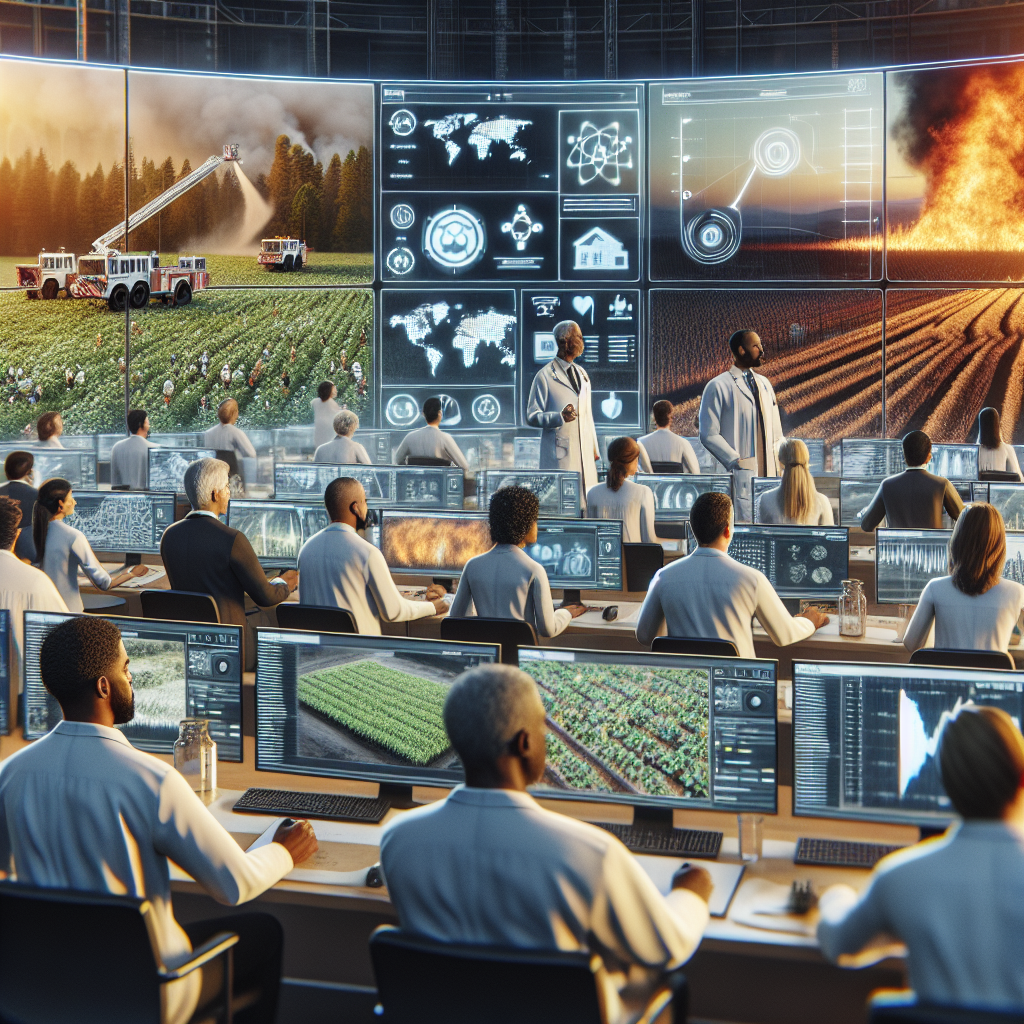New AI Collaboratives to Take Action on Wildfires and Food Insecurity
The challenges posed by wildfires and food insecurity are among the most pressing issues facing our world today. As climate change intensifies and affecting global weather patterns, the risk of wildfires has substantially increased, leading to devastating impacts on communities, ecosystems, and economies. At the same time, food insecurity remains a significant and growing concern, with millions of people around the globe lacking reliable access to sufficient and nutritious food. To tackle these complex challenges, innovative solutions are necessary. Recently, new AI collaboratives have emerged to address these issues and create pathways for sustainable practices.
The Role of AI in Tackling Wildfires
Wildfires have become a recurring nightmare across various regions, particularly in areas prone to extreme weather conditions. The traditional methods of monitoring and responding to wildfires are often inadequate in the face of rapidly changing circumstances. This is where artificial intelligence comes into play.
Real-Time Monitoring and Prediction
With advancements in technology, AI can analyze vast amounts of data from various sources, including satellite imagery, weather patterns, and historical fire data. By utilizing machine learning algorithms, AI systems can predict the likelihood of wildfires based on current environmental conditions. This capability allows fire management agencies to respond more effectively, deploying resources to areas at higher risk and potentially preventing catastrophic outcomes.
Enhancing Firefighting Strategies
AI-driven analytics can optimize firefighting strategies by simulating various scenarios. By evaluating different approaches and their potential outcomes, agencies can determine the most effective methods for containment and suppression. This data-driven approach enables more precise resource allocation, ultimately saving lives and property.
Addressing Food Insecurity with AI Collaboratives
While wildfires pose an immediate threat to safety and infrastructure, food insecurity represents a longer-term crisis that affects health and well-being. Global supply chains for food are increasingly strained due to climate-related disruptions, economic challenges, and population growth. AI collaboratives are stepping up to tackle food insecurity through innovative strategies.
Optimizing Agricultural Practices
AI can enhance agricultural productivity by analyzing soil quality, weather patterns, and crop health. With the help of predictive analytics, farmers can make informed decisions about planting, irrigation, and harvesting. Additionally, AI can help in the development of climate-resilient crops that can withstand extreme weather conditions, ensuring food production remains stable even in challenging circumstances.
Streamlining Food Distribution
One of the key challenges in addressing food insecurity is the inefficiency of food distribution systems. AI collaboratives can optimize supply chain logistics, ensuring that food gets from producers to consumers more effectively. By analyzing demand patterns and transportation routes, AI can reduce food waste and improve access to nutritious food for underserved populations.
Collaboration Between Sectors
The success of these AI collaboratives hinges on the collaboration between various stakeholders, including governments, non-profit organizations, tech companies, and local communities. By working together, these entities can pool resources, share data, and develop comprehensive strategies that address both wildfires and food insecurity.
Policy Frameworks and Funding
For AI initiatives to thrive, supportive policy frameworks and funding are essential. Governments can play a pivotal role in establishing regulations that encourage collaboration between sectors and incentivize the adoption of AI technologies. Financial support can also help initiate pilot projects that test and refine these innovative approaches.
Community Engagement and Education
Involving local communities in the development and implementation of AI solutions is crucial. Community engagement fosters a sense of ownership and responsibility, ensuring that the strategies developed are culturally sensitive and address the unique needs of each community. Education and training programs can equip individuals with the skills needed to leverage AI technologies effectively.
Future Perspectives: A Sustainable Path Forward
As we move forward, the intersection of AI, climate action, and food security will become increasingly vital. The new AI collaboratives represent a promising step toward a more sustainable future, where technology plays a critical role in mitigating the impacts of wildfires and ensuring food access for all.
Continuous Innovation and Adaptation
The landscape of both climate change and food insecurity is constantly evolving. Continued innovation in AI technologies will be necessary to adapt to these changes effectively. Ongoing research and development efforts will ensure that AI solutions remain relevant and impactful in addressing emerging challenges.
Global Cooperation for Local Solutions
Ultimately, the challenges of wildfires and food insecurity are global in nature but require localized solutions. International cooperation can facilitate the sharing of knowledge, best practices, and resources among countries facing similar challenges. By fostering a spirit of collaboration and shared purpose, we can build resilient communities equipped to face the complexities of the future.
Conclusion
In conclusion, the emergence of new AI collaboratives represents a significant opportunity to tackle two of the most critical issues of our time: wildfires and food insecurity. Through real-time monitoring, predictive analytics, optimized agricultural practices, and enhanced distribution systems, AI can offer transformative solutions. By fostering collaboration across sectors, engaging communities, and promoting continuous innovation, we can pave the way towards a more sustainable and secure future for all. The integration of technology with human ingenuity is crucial in overcoming these daunting challenges, making it essential to invest in AI-driven initiatives now to safeguard our planet for generations to come.



